Impressions from Iran, Part 1 (Schiras and Persepolis)#
by H. MaurerIntroduction#
Known as Persia until 1935, Iran became an Islamic republic in 1979 after the ruling monarchy was overthrown and Shah Mohammad Reza Pahlavi was forced into exile. Conservative clerical forces led by Ayatollah Ruhollah Khomeini established a theocratic system of government with ultimate political authority vested in a learned religious scholar. He is called the "Supreme Leader" who is accountable only to the Assembly of Experts.Iran with 1,648,195 sq km is about 5 times lager than Germany but has about the same size of population, i.e. a bit over 80 million. Henced its population density is only about 50. Population is still growing but ony moderately (0.3 percent per year). After some of the sanctions based on the nuclear program of the country were lifted in 2016, economy is growing and Iran has not only become a major destination for tourism but its economic growth will depend on tourism quite a bit. More on Iran see the global-geography section.
Most trips to Iran follow the route Tehran-Isfahan-Shiraz or vice versa, with some possible side trips, e.g. to Yazd, see map below. They contentrate on culture, so that visitors often return with little knowledge that Iran also has much new technology and archtitecture to offer. The pictures in this report will (I apologize) also be of this kind, simply because they were taken during a group trip of 9 days, when none of the modern accomplishments of Iran are shown. Also, one does not visit the eastern and south-eastern part of the country with intriguing desserts, nor the coastal parts and islands South of Shiraz (some known to be very relaxed holiday destinations). Further, the beautiful area north-west of Tehran extending to the Caspian sea, north of the Elbrus mountains. Its highest peak Damavand at 5,670 m ist just part of the massive mountain range, visible from Tehran, smog permitting. It thus may well be worth to look at the nice pictures in the book: DamavandDer höchste Berg IransKarl Gratzl et al.Weishaupt VerlagGnas2001
The usual trip#
We will follow this route starting in Schiras. We will visit the cities shown but also a number of interesting sites along the way, particularly of course Persepolis and the mountains North of Isfahan. This current Part 1 will only deal with Schiras and Persepolis and a bit to the north. The beautiful desert cities Yazd and a bit of Nain are dealt with in Part 2. Part 3 is dedicated to Isfahan, Part 4 to two important places en route to Tehran, including the red village in the mountains and the holy city of Qom. The last Part 5 shows a bit of Tehran.
Schiras, Persepolis and surroundings#
Schiras #
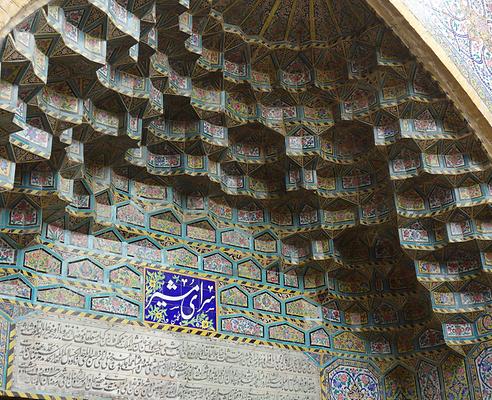
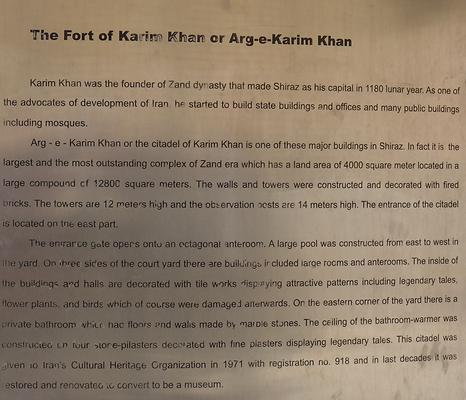
Schiras is almost "one mile high" (1600 m above sea level). It has some 1,5 million inhabitants. It is known for its flowers and gardens when in season, for its mosques and a number of specialities, like the mausoleum for the most famous Iranian poet, or a special area for higher-end shops near the Bazar that is heralded by the arch Saray-e-Moshir with impressive decorations.
The Karum Khan Fortification is at the center of the city. Its outside walls are 125 by 94 m long and its round towers in the corner are 15 m high. There is a nice inside park with a pond and a museum.

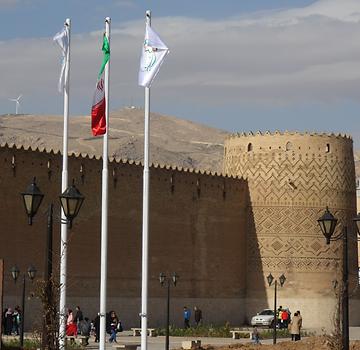



The Vakil mosque was built by Karim Khan, and finnished in 1773. With outside measurements 110 by 104 meters it is one of the larget mosques of the 18 th and 19 th century. Its style is close to early islamic style. The major prayer-hall has 48 impressive columns made of marble. The main decoration is near the Mihrab-niche (a semicircular niche in the wall of a mosque that indicates the qibla, i.e. the direction of the Kaaba in Mecca and hence the direction that Muslims should face when praying. The wall in which a mihrab appears is thus the "qibla wall". Mihrabs should not be confused with the minbar, which is the raised platform from which an Imam (leader of prayers) addresses the congregation.)
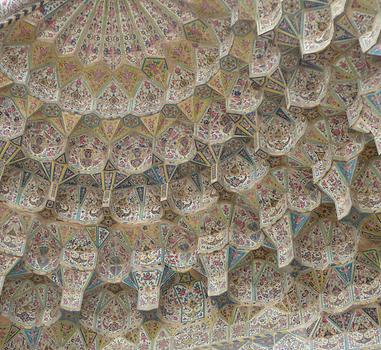


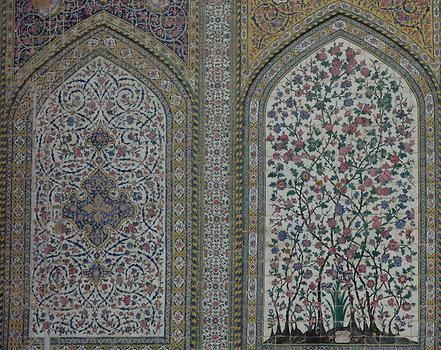
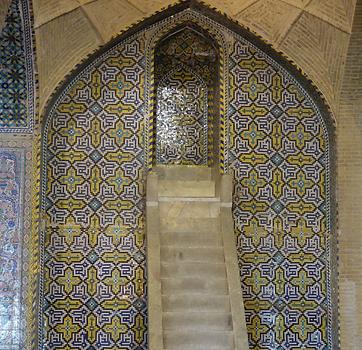

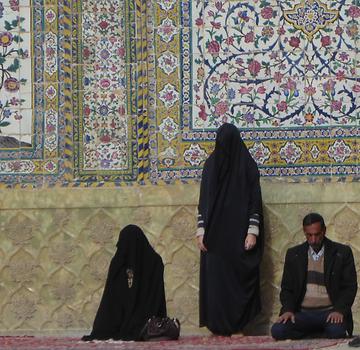

The Vakil bazar is adjacent to Vakil mosque and really consist of two parts: a "usual" basar, and (as mentioend above) a separate "better" shpping area.
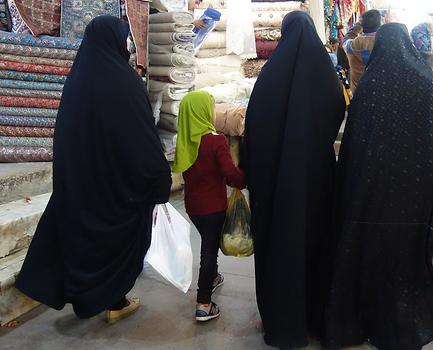
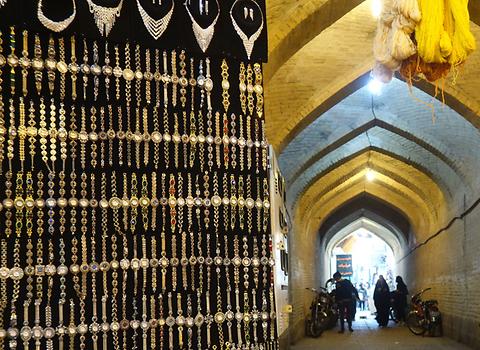
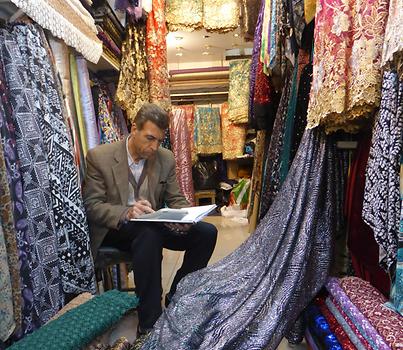
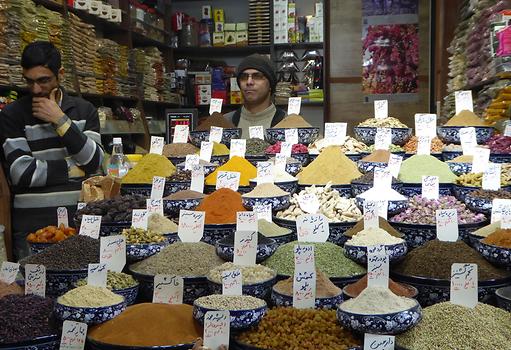
Also quite close to the Vakil mosque is an old public bath (now out of use but good for touristic visits) to show how Iranians (who usually had no bathing facilities in their home) took care of their bodies.
They would attend a steam bath a few times week, also getting there all kinds of other treatments: like peeling of skin, removal of all hair (except beard and hair on the head, but including arms, legs, armpits, and also all private parts, something that entered Western civilization only in the last century and is still not universally accepted).
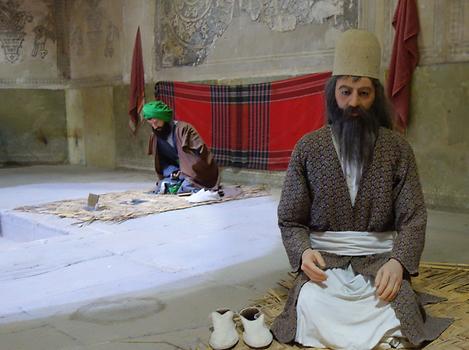

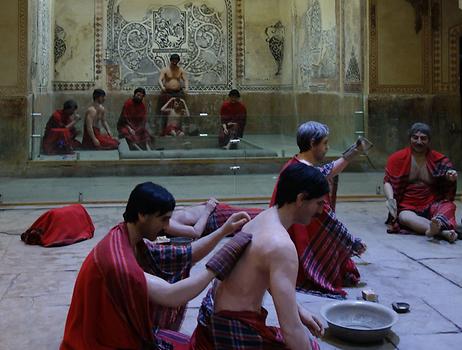
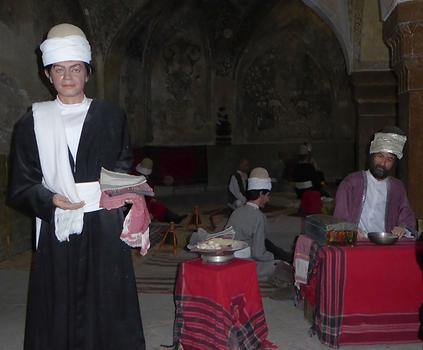
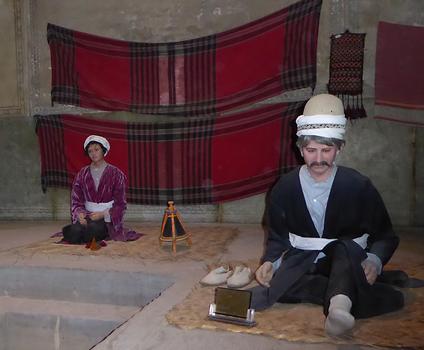
One of the big attractions of Schiras is the "red mosque" (Nasir ol Molk Mosque) with its beautiful window-panes creating a truly spiritual atmosphere.
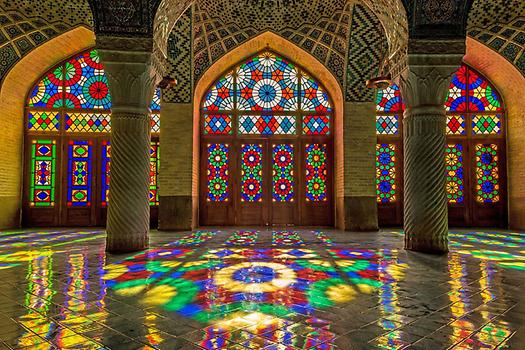
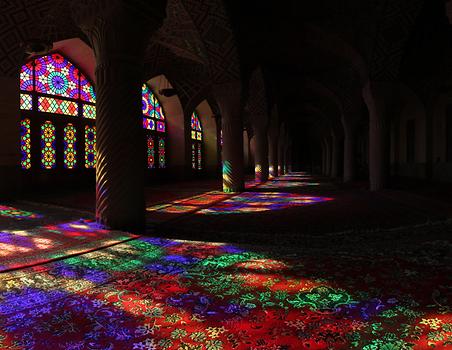
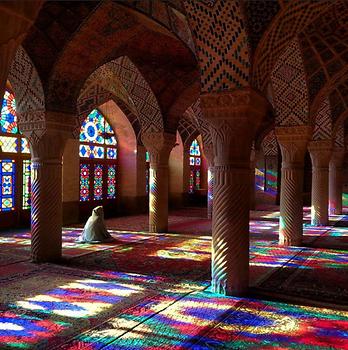

Schiras is also considered the city of poets. The most famous one, Hafez (later known as Hafis indicating his complete knowledge of the Quran) was born around 1315 and died in 1390. His writings are still considered treasures today, many of his poems, his "ghazals" deal with love, wine and tavern, all presenting the ecstasy and freedom from restraint, whether in actual worldly release or in the voice of the lover speaking of divine love. His free style of poetry and life (drinking alcohol, for instance) did not fit well into islamic traditions: afte rhis death there was a mjor debate whether he should be honored by a mausoleum or not.
Hafis deeply influenced later Western literature, particular the German one due to translations by Hammer-Purgstall (1812), Vinzenz Rosenzweig Schwannau (1858–64) and the admiration of Goethe in his "West-östlicher Divan (1819).
His mausoleum (buitl, after ll, and rebuilt a few times) still attracts many visitors. For first visitors it comes as quite a surprise that near the entrance to the garden housing the mausoleum and pavillon for Hafez, local poets are sitting on the sidewalks reciting poems, their own, famous Iranian ones, some even in English.
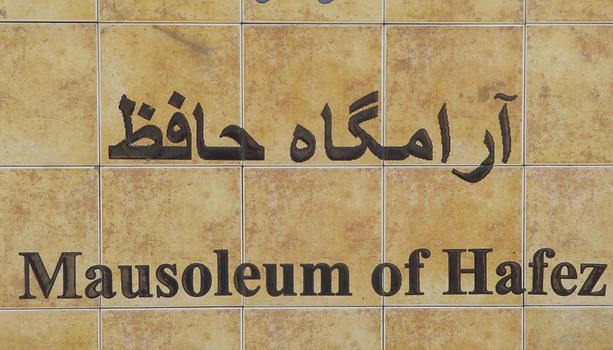

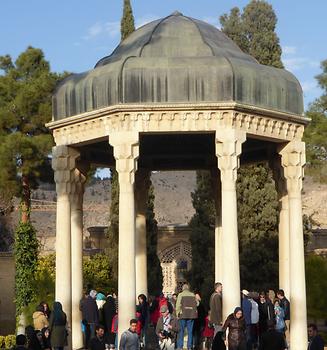

Another big attraction in Schiras is the mirror mosque, a mosque where all the interior is covered with small pieces of mirrors, creating both a confusing and unusual atmosphere. Women are required here to hide their full body, tourists typically in outfits made available to them as part of the entrance fee.
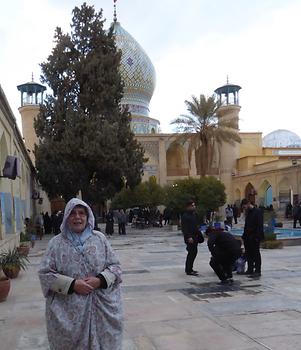
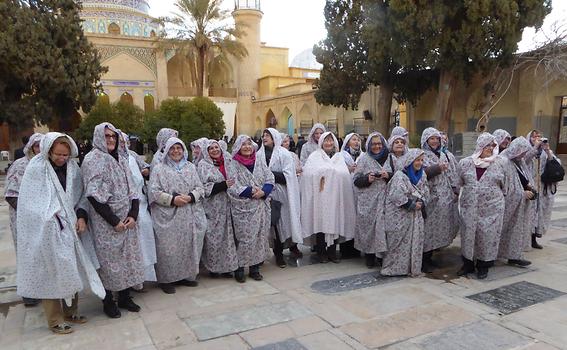
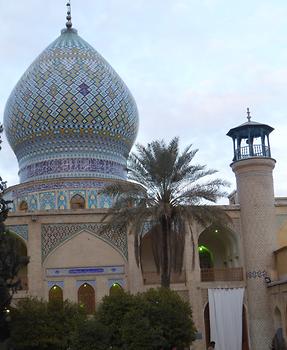


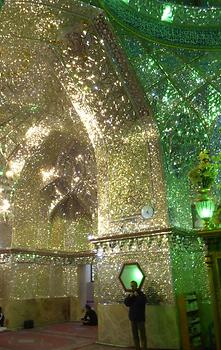

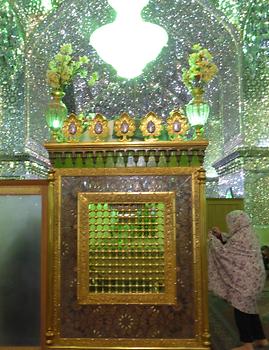
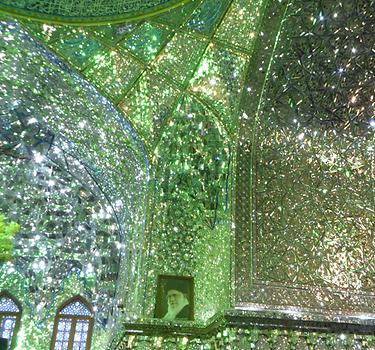
It is time to say good bye to Schiras. We are still visiting a tea-house, where the waitress is surprisinlgy relaxed when we want to take her photo. Not very common in Iran!
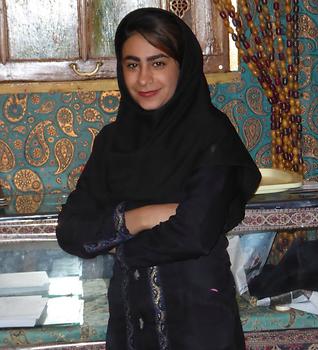
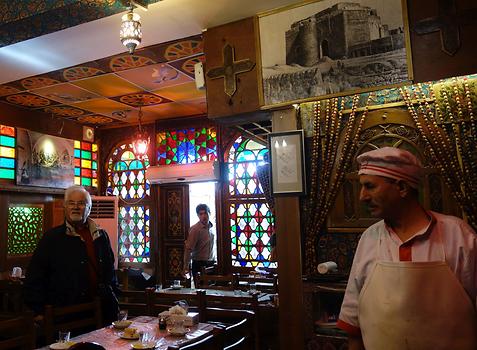
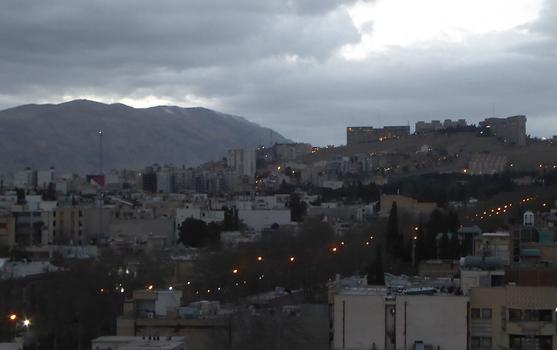
Persepolis#
One of the main reasons why Schiras is included in every typical cultural tour of Iran is probably not just Schiras itsself, but Persepolis, the ancient capital of the Achaemenid Empire, and the rock-burial chambers (tombs) nearby. Both are quite close to Schiras (60 km from Schiras to Persepolis) and shown on the map below toehter with Pasargad, the first capital of the Achaemenid empire.Persepolis was the ceremonial capital of the Achaemenid Empire (ca. 600–330 BC). The site includes a 125.000 square meter terrace, partly artificially constructed and partly cut out of a mountain.
It is believed that Cyrus the Great was the founder of the Achaemenid Empire. He pulled together all the previous civilized states of the ancient Near East. It eventually covered most of Southwest Asia and much of Central Asia and the Caucasus. From the Mediterranean Sea and Hellespont in the west to the Indus River in the east, Cyrus the Great created the largest empire the world had yet seen. It is believed that he chose the site of Persepolis, but that only under Darius I (the third king) Persepolis became the capital of Iran/ Achaemenid empire proper.
Alexander the great not only destroyed Persepolis in 330 B.C. Persepolis never recovered. From from the building called Treasury of Persepolis, guarded by thick walls and filled with all the gifts, taxes, tributes coming form the various parts that had been conquered (as is depicted in some of the reliefs below) Alexander reportedly used 3.000 camels and mules to carry off its contents!
The area is huge, is reached via an impressive Terrace Stairway with 111 steps, each 40 cm high, leading to an area known as "Gate of All-Lands". It contains a number of palaces (Apadan Palace, Tachara Palace, Hadish Palace), administrative buildings (one converted into a museum), the Treasury, a cistern, and other impressive remnants including well-preserved reliefs on the walls.
We start after the stairway with a few pictures of the "Gate of All-Lands": This palace was built by Xerxes (successor of Darius I). It contained four columns. Of the three now still visible one has been reconstructed from small pieces. A bit north is a column with two eagle griffins, those legendary creatures with the body, tail, and back legs of a lion, and the head and wings of an eagle and an eagle's talons as its front feet. Because the lion was traditionally considered the king of animals and the eagle the king of birds, the griffin was considered teh most powerful and majestic creature.
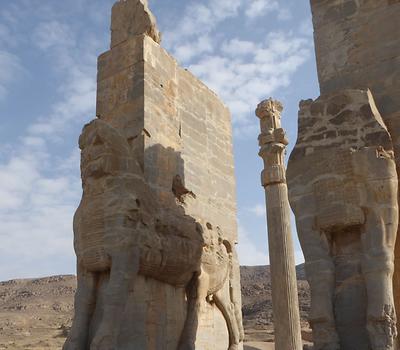


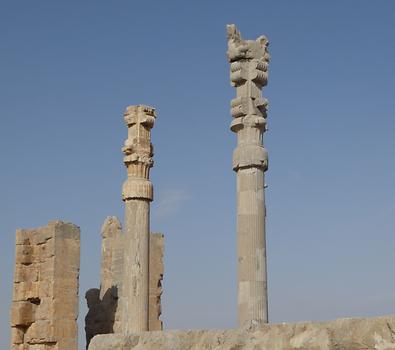
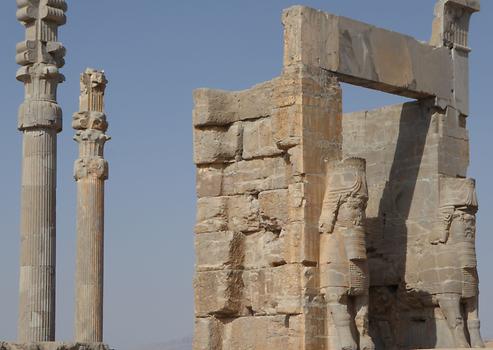
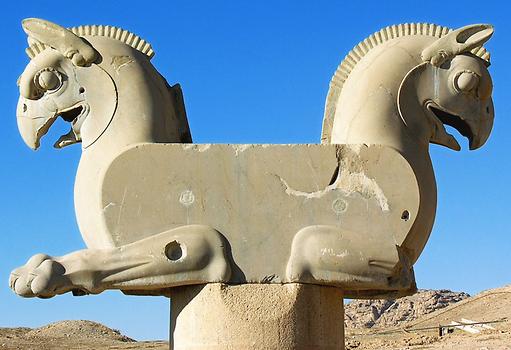
There are impressive remnants of palaces and other builidngs all over the site. When the Islamic regime took over after expulsion of the Shah it attempted to erase all ruins of Persepolis as non-islamic. Fortunately, the resistance of local people was strong enough to preserve this pearl for the future... and as major magnet for tourists.
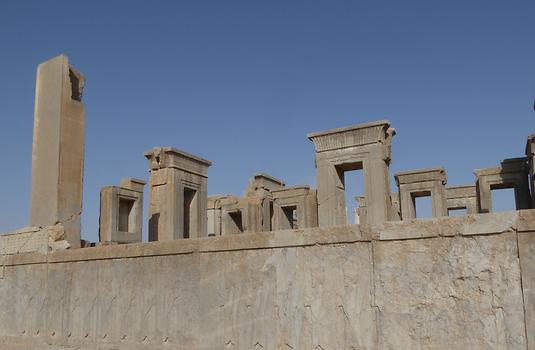

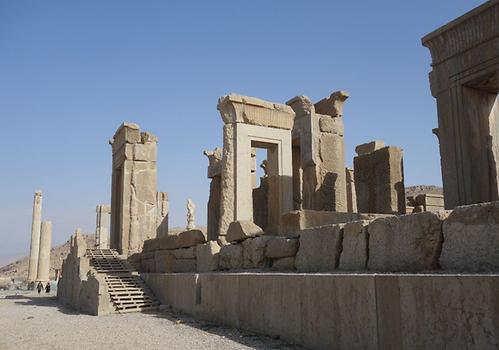
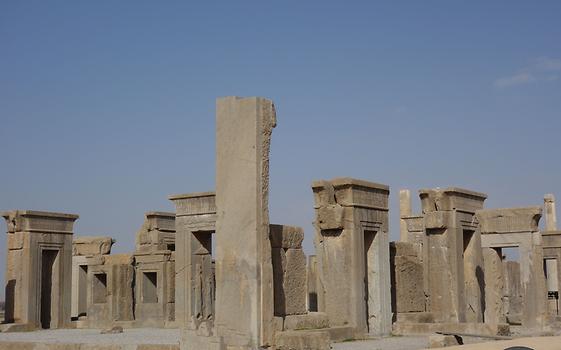
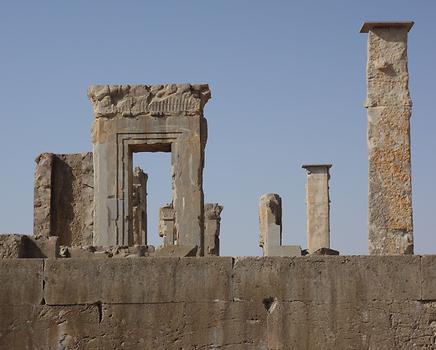

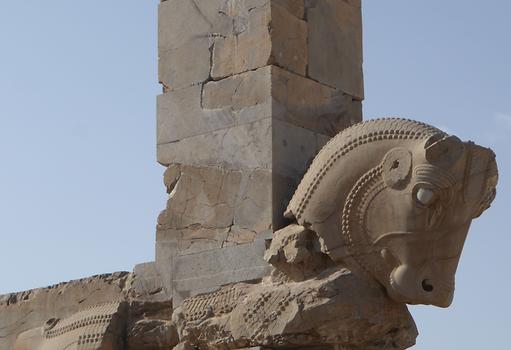
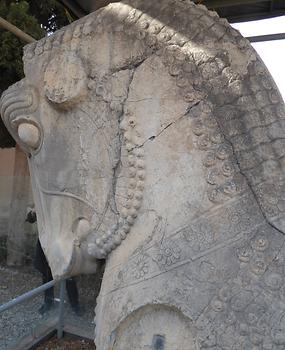
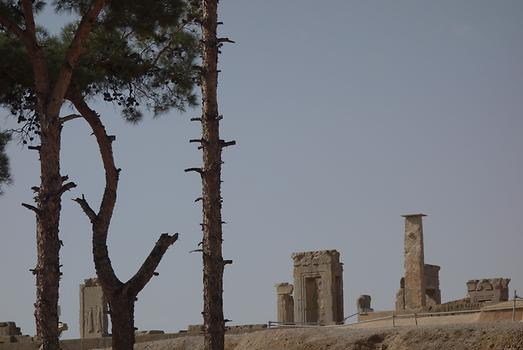
As one walks through the site there are literally thousands of relief showing important persons, events and quite often representatives of the various kingdoms ruled from Persepolis bringing tribute or taxes.
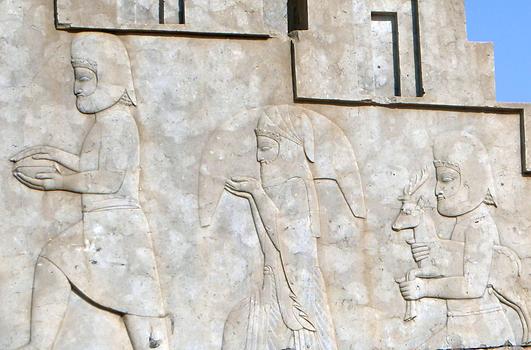

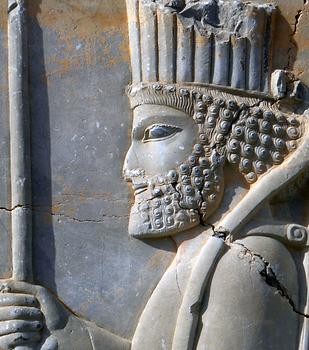
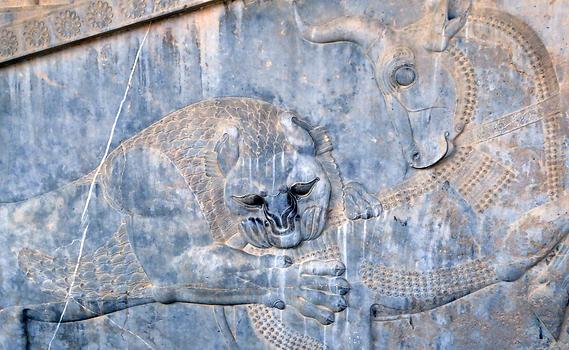
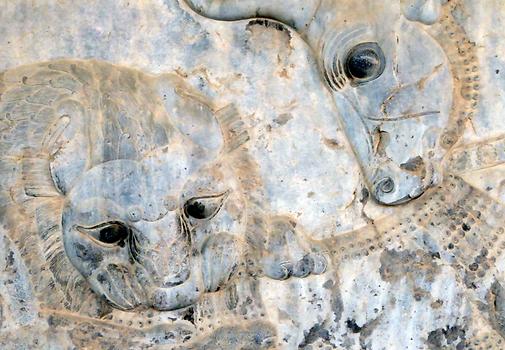
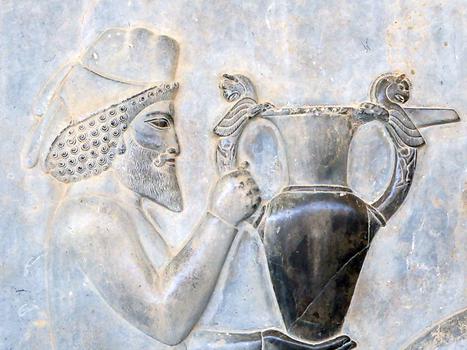
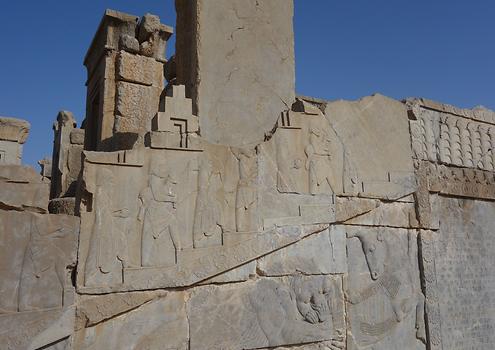

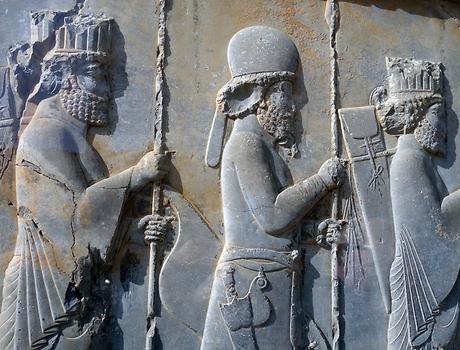

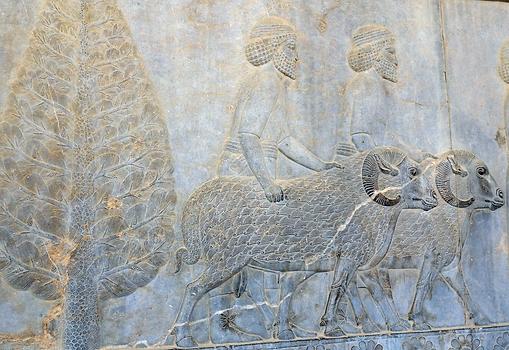
The Treasury of Persepolis was built by Darius the Great (Darius I) and enlarged by his successor Xerxes. It was used to store all non-perishable goods that were brought as taxes or tributea to the king as ruler of their territory, but also goods obtained during wars. It was one of the richest in the world before it was destroyed and its riches moved to Greece by Alexander the Great. In the background half-way up a steep hill is the tomb of Artaxerxes II and III, two of the successors of Xerxes.
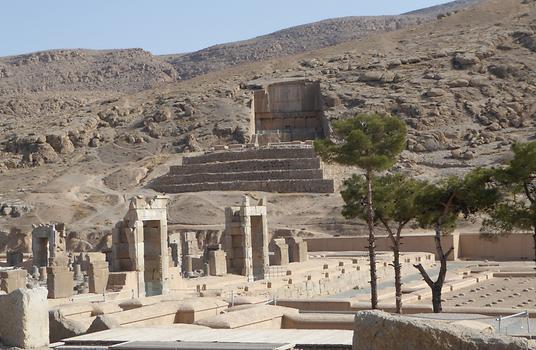
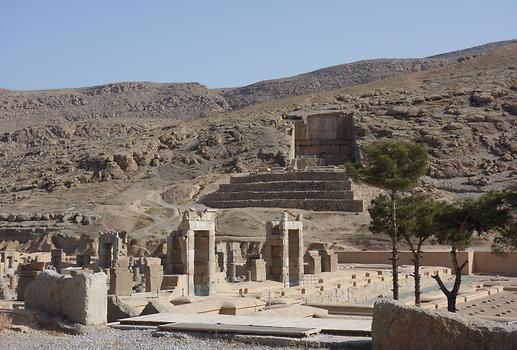
Naqsh-e-Rostam#
Near Persepolis there are a number of tombs (burial sites) for kings in the face of vertical rocks. Four tombs belonging to Achaemenid kings are carved out of the rock face at a considerable height above the ground. The tombs are sometimes known as the Persian crosses, after the shape of the facades of the tombs. The entrance to each tomb is at the center of each cross, which opens onto to a small chamber with the sarcophagus.One of the tombs has been identified as the tomb of Darius I (c. 522-486 BC) by an accompanying inscription. Next to the tombs there are also huge reliefs showing scenes of the lifes of the emperors that are entombed.

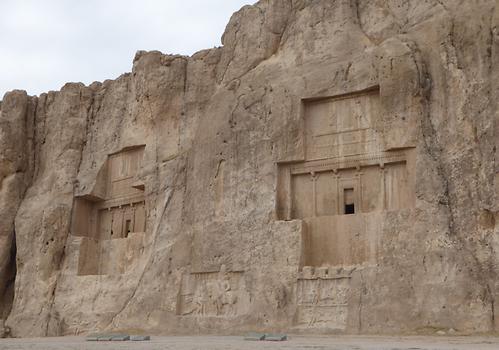

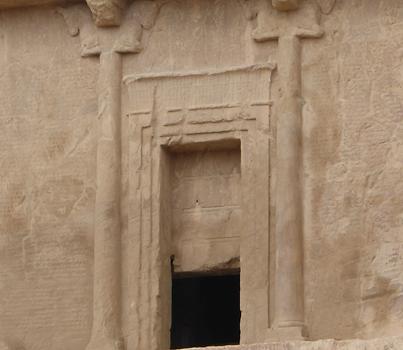
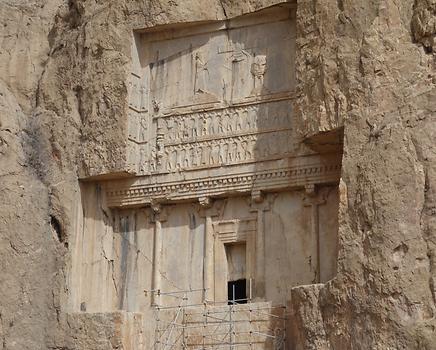
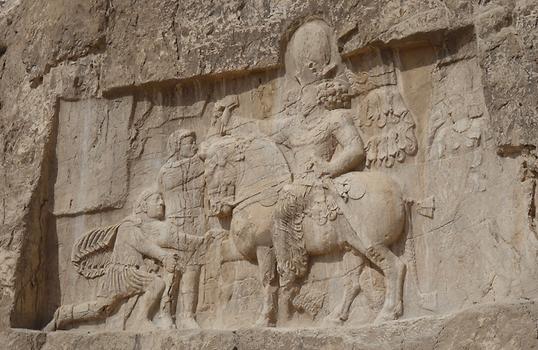
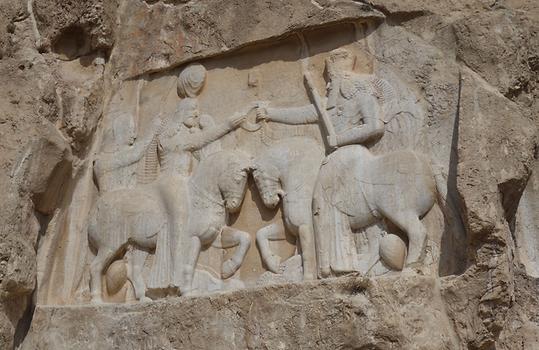

Pasargad#
Some 80 km north of Prespolis is Pasargad. Pasargadae was the capital of the Achaemenid Empire under Cyrus the Great who started its construction (559–530 BC). Today, little is remaining of this once important metropolis except for the tomb of Cyrus. Located in the middle of the desert, quite a bit away from the modest ruins left of the city, the tomb impresses by its solitude.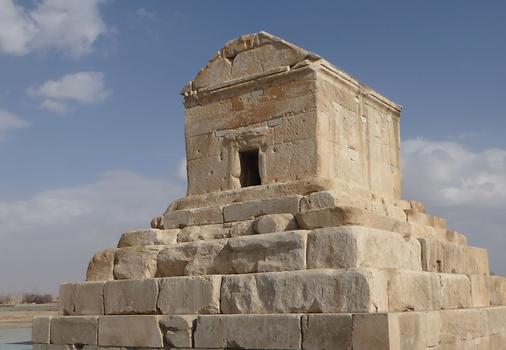
We now continue North via Pasargad to Yazd in: Impressions of Iran, Part 2.
Alternative choices:
- Continue to Impressions of Iran, Part 2 (Qazd and Nain)
- Continue to Impressions of Iran, Part 3 (Isfahan)
- Continue to Impressions of Iran, Part 4 (From Isfahan to Tehran)
- Continue to Impressions of Iran, Part 5 (Tehran)
